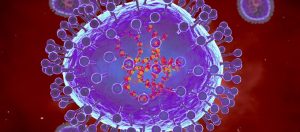Nipah virus is back in Kerala, three years after a major outbreak. A 12-year-old boy infected with the virus died in Kozhikode on Sunday morning. Among other symptoms, the boy showed inflammation of the brain and heart muscles respectively. The outbreak comes even as the state struggles to contain COVID numbers, reporting 60% of all new cases in the country.
Kerala witnessed the first outbreak of Nipah in 2018 and won accolades for handling it well. With no past experience of handling the disease, Kerala followed the protocol for Ebola virus disease. Seventeen people died due to Nipah virus in this outbreak.
Also read: All about scrub typhus, the possible reason for UP’s mystery deaths
The state banked heavily on contact mapping and put all contacts — direct or indirect — of an infected person under observation. At one point in June 2018, around 3,000 people were under quarantine in Kozhikode and adjoining Malappuram. The way this outbreak was handled made international headlines
When the virus returned in 2109.the health department had a watertight protocol in place. The result of which was that one case was reported in Ernakulam district. The year 2020 went off without a single case.
Also read: What is Nipah virus?
This time around, the administration has cracked down on the Kozhikode village that reported the case. The victim hailed from the village of Chathamangalam, 50 km from Changaroth and three wards under Chathamangalam panchayat were completely closed down on Sunday morning.
Like COVID lockdown, micro-level restrictions have been put in place. The movement to and from these three wards has been banned. Barricades and checkpoints have been put at all entry points to the village of the victim.
The COVID pandemic has made people more aware of contagious, viral disease and use of masks, PPE kits and gloves is also helping the health workers. Going by past experience, Nipah virus is easier to contain and strict measures usually help. It is far less effective than SARS-CoV-2.
All about the virus
Nipah virus is a zoonotic virus, which means it can spread between animals and people. Fruit bats, also called flying foxes, are said to be the animal reservoir for Nipah Virus in nature, according to the US’ top health agency, the Centers for Disease Control and Prevention (CDC). Nipah Virus can cause illness in both animals and people.
It can spread among people through direct contact with infected animals, such as bats and pigs, or with their bodily fluids including blood, urine and saliva. Further, consuming food contaminated by bodily fluid of infected animals can infect people. Moreover, close contact with a person infected with Nipah Virus or their bodily fluids, including nasal, respiratory droplets, urine or blood, may also spread the virus.






